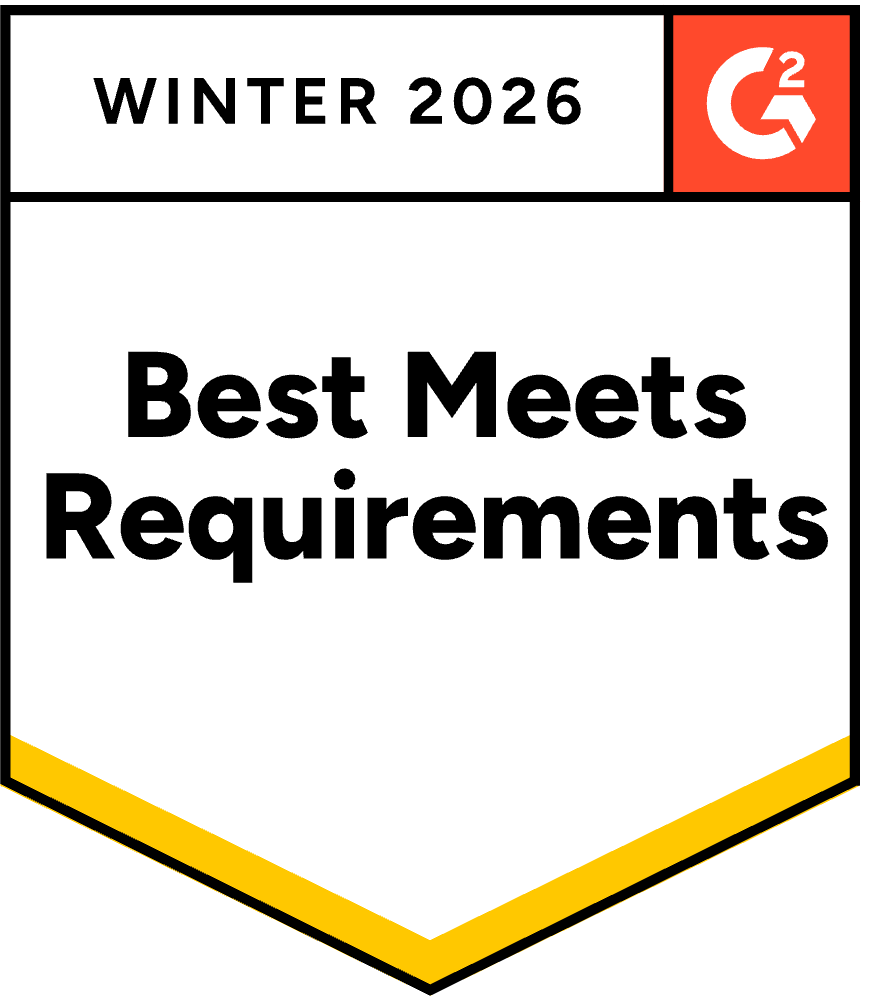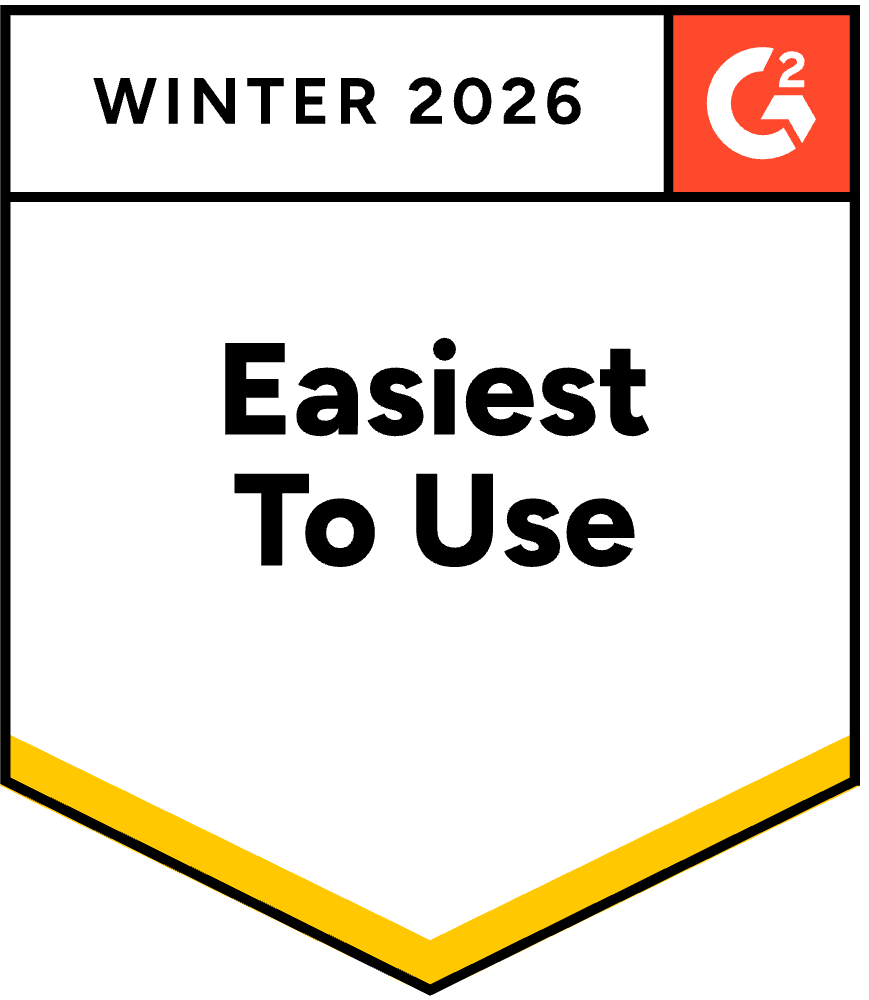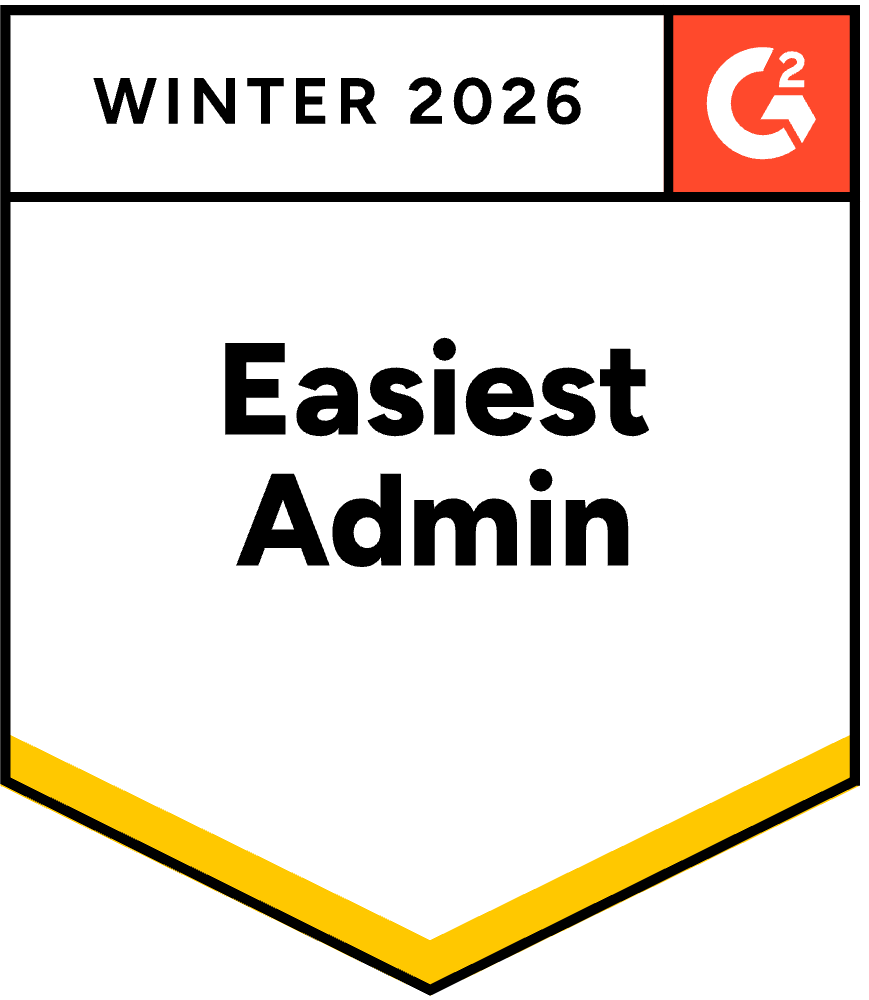RFI vs RFP vs RFQ: What's the Difference?
November 3, 2025
By
Evie Secilmis

The procurement process can feel like a black box. You submit a response and hope for the best. But what if you could see the buyer’s roadmap? Understanding the sequence of RFI, RFQ, and RFP gives you that visibility. These documents aren't random; they are logical steps in a buyer's journey from identifying a problem to making a purchase. Knowing the difference helps you anticipate their next move and tailor your communication perfectly. This article demystifies the entire rfi rfp lifecycle, showing you how each document builds on the last and what it takes to advance to the next stage.
Choosing the right procurement document can mean the difference between clarity and chaos.
Whether you're selling enterprise software, evaluating vendors, or building a repeatable presales workflow, understanding RFI vs RFQ vs RFP is essential.
In this guide, we break down:
- What each document means
- When to use them
- Real examples
- Downloadable templates
- How automation accelerates every stage
Let’s make this simple — and strategic.
RFI, RFQ, and RFP: Let's Break It Down
What is an RFI?
An RFI (Request for Information) helps buyers collect high-level information about vendors, products, and capabilities before defining project scope.
Use when you're still learning and narrowing options.
Key Characteristics of an RFI
- Purpose: Think of an RFI as the "we're just looking" phase of procurement. A company knows it has a problem but isn't sure about the best solution yet. The goal is purely to gather information and get a sense of what’s available in the market. It’s all about education and exploration for the buyer.
- Timing: This is one of the first dominos to fall in the buying process. You'll typically receive an RFI when a buyer is in the early discovery stages of a project, long before any decisions are set in stone.
- Response Nature: Keep it educational, not salesy. An RFI response is less formal than an RFP. It should provide a high-level overview of your company's capabilities and how you generally solve the types of problems the buyer is facing, without getting into granular details or pricing.
- Outcome: The buyer isn't looking to make a purchase from an RFI. Instead, they use the responses to create a shortlist of qualified vendors who will likely be invited to the next stage—usually a more detailed RFP or RFQ. Your goal is to make that list.
What is an RFQ?
An RFQ (Request for Quote) is used when requirements are known and you need price proposals for a clearly-defined solution.
A Note on Acronyms: Request for Quotation vs. Request for Qualifications
Just when you think you have the procurement lingo down, an acronym can throw you for a loop. The term RFQ is a perfect example, as it can stand for two different documents. Knowing which one you’re dealing with is crucial for crafting the right response.
Most of the time, RFQ means a Request for Quotation. This is the document buyers use when they know exactly what they need and are primarily focused on cost. Think of it as a highly specific shopping list. The buyer has already defined the requirements for a product or service and is now asking vendors to provide their best price. The goal is straightforward: to get competitive pricing for a clearly defined purchase.
Occasionally, however, RFQ can refer to a Request for Qualifications. This document has a completely different objective. It’s not about price but about experience, expertise, and capabilities. Buyers use this to pre-screen and vet potential vendors, creating a shortlist of qualified companies they might work with in the future. It’s less about a specific transaction and more about evaluating a potential partner’s overall suitability and track record.
What is an RFP?
An RFP (Request for Proposal) is used to evaluate detailed vendor solutions, technical fit, timelines, and pricing for complex purchases.
Key Characteristics of an RFP
Think of the RFP as the main event. It’s the document buyers use when they have a complex problem and need a detailed, customized solution. An RFP goes beyond simple specs and pricing; it asks vendors to explain how they will solve the buyer's specific challenges. Because of this, an RFP gives specific details about the buyer’s needs, covering everything from technical requirements and implementation timelines to service level agreements and, of course, pricing. It’s a comprehensive request that allows buyers to compare not just features, but the overall strategy and partnership potential of each vendor. This is where you truly showcase your value.
Understanding the Procurement Process Flow
These documents don't exist in a vacuum. They are part of a larger strategic process that helps buyers make informed decisions efficiently. While the exact sequence can vary depending on the project's complexity and the buyer's familiarity with the market, there is a common and logical order that most procurement processes follow. Understanding this flow helps you anticipate the buyer's next move and prepare your responses accordingly. It’s about seeing the bigger picture of the sales cycle, from initial exploration to the final handshake, and knowing where each document fits into that journey.
The Typical Order: From Information to Pricing
The procurement journey often follows a logical funnel, moving from broad exploration to a specific purchase decision. The typical sequence is RFI, then RFP, then RFQ. It starts with the RFI, where the buyer is in a learning phase, casting a wide net to understand the market and identify potential vendors. Once they’ve narrowed the field, they issue an RFP to get detailed, customized solutions from a shortlist of qualified suppliers. Finally, if the solution is well-defined or commoditized, they might use an RFQ to get concrete pricing. This RFI to RFP to RFQ process ensures the buyer gathers the right information at the right time.
Effort and Formality: RFI vs. RFP
The difference in effort between responding to an RFI and an RFP is significant. An RFI is relatively informal—a way to introduce your company and its capabilities. An RFP, on the other hand, is a much heavier lift. Because RFP responses must be formal, detailed, and meticulously tailored to the buyer's needs, they demand a serious investment of time and resources. This is where having a streamlined process becomes critical. Many teams use an AI deal desk solution to manage the complexity, pull accurate information quickly, and ensure every proposal is high-quality, consistent, and perfectly aligned with what the buyer is asking for.
📊 RFI vs RFQ vs RFP — At a Glance
RFI vs RFQ vs RFP — Comparison RFI Guide ↗ RFP Guide ↗ RFQ Guide ↗
| Document | When Used | Primary Purpose | Buyer Focus | Vendor Strategy | Typical Deliverables |
|---|---|---|---|---|---|
| RFI | Early discovery — requirements unclear; multiple solution paths. | Understand market capabilities & shortlist qualified vendors. | Clarify needs; gather compliance & integration signals. | Educate, differentiate clearly, keep responses crisp & consistent. | Company overview, capabilities matrix, integrations, high-level security posture. |
| RFP | Mid-evaluation — problem is defined; approach not finalized. | Compare solution design, implementation plan, risk, and value. | Scoring & evaluation; stakeholder alignment; references. | Show depth, roadmap, and delivery confidence; tailor by use case. | Technical approach, timeline, team, success plan, pricing model. |
| RFQ | Late stage — scope, specs, and quantities are known. | Obtain firm pricing, SLAs, and commercial terms. | Normalize quotes; confirm delivery dates & contract terms. | Offer clear, comparable pricing and onboarding model. | Itemized quote, discounts, SLAs, payment & renewal terms. |
Which One Should You Use: RFI, RFQ, or RFP?
When to Use Each — RFI vs RFP vs RFQ RFI Guide ↗ RFP Guide ↗ RFQ Guide ↗
| If you need to… | Use | Why | Great for | Helpful Iris features |
|---|---|---|---|---|
| Understand what’s possible and define requirements | RFI | Early discovery before scoping. | New categories, complex needs. | Knowledge Map, AI Drafting, Assignments |
| Compare detailed solution approaches | RFP | Formal evaluation and decision-making. | Enterprise buying cycles. | AI Drafting, Security Questionnaires, Integrations |
| Get final pricing and terms | RFQ | Scope known; compare pricing & SLAs. | Standard products & renewals. | Knowledge Map, Assignments |
RFI, RFP, and RFQ Examples in Action
You know the problem, not the solution - RFI
You know the solution and need execution - RFP
You know exactly what to buy - RFQ
Examples:
- Shopping for AI proposal tools? → RFI
- Comparing enterprise vendors? → RFP
- Buying 1,000 laptops? → RFQ
Why the RFI, RFQ, and RFP Process Still Matters
Even in the age of automation, understanding the purpose of each procurement document keeps communication clear between buyers and sellers. Each serves a different stage of the purchasing process—information gathering, proposal evaluation, and pricing confirmation. When used properly, this framework ensures vendors are evaluated fairly and projects stay aligned with defined business outcomes. Skipping or combining these steps often leads to confusion, duplicated work, and missed opportunities for alignment between procurement and presales teams.
Benefits for Businesses of All Sizes
This structured approach to procurement isn’t just for massive corporations. Whether you're a startup or a Fortune 500 company, these documents help streamline purchasing, manage supplier relationships, and reduce risk. For large organizations, the RFI, RFQ, and RFP process is key to organizing complex information and standardizing vendor evaluation across departments. For smaller businesses, it provides a framework for making smart, objective decisions that prevent wasteful spending. As a seller, understanding the buyer's company size can give you clues about their primary motivation—are they focused on process and scale, or on making a single, critical purchasing decision?
Creating Audit Trails and Ensuring Fairness
Beyond just picking a vendor, the formal proposal process creates a transparent record of how and why a decision was made. This documentation is essential for creating a clear audit trail, which is critical for internal governance and compliance. It ensures that the selection was based on merit and aligned with the stated requirements, rather than personal preference. For some organizations, particularly government agencies, using an RFP isn't just good practice—it's a legal requirement to ensure fairness and provide equal opportunity to all potential suppliers. This structured evaluation levels the playing field, giving every vendor a fair shot based on the quality of their proposal.
Public vs. Private Sector Requirements
While both public and private organizations use these documents, their approaches can differ significantly. Public sector procurement often involves more rigid rules and requires highly detailed information to comply with strict laws and transparency mandates. In contrast, the private sector tends to be more flexible, often simplifying requirements to encourage a wider range of suppliers to respond and to accelerate the buying cycle. Knowing which sector you're selling to is crucial; a response for a government contract demands meticulous attention to every line item, while a response for a private company might allow for more creative problem-solving.
How Common is the RFP Process?
If it feels like your team is constantly working on proposals, you’re not wrong. On average, companies send out 162 RFPs each year. That number highlights just how central this process is to B2B sales. For proposal and presales teams, this volume presents a massive challenge: how do you deliver high-quality, accurate, and persuasive responses on tight deadlines, over and over again? Manually tackling this workload leads to burnout, inconsistent messaging, and costly errors. This is where an AI-powered platform becomes essential, helping teams manage the entire deal desk from a single source of truth and turn around winning proposals faster.
Using AI to Improve Your RFI and RFP Process
Artificial intelligence brings consistency and structure to previously manual processes. Instead of teams digging through old responses, AI identifies the best answers from past RFIs, RFPs, and RFQs and suggests context-aware updates for new requests. This not only speeds up turnaround time but also improves response quality and brand consistency. With AI-enabled tools like Iris, organizations can turn complex, multi-step procurement cycles into unified, trackable workflows that integrate with existing CRMs and collaboration platforms.
How to Build a Scalable RFI and RFP Process
The key to efficiency isn’t just answering faster—it’s answering smarter. Establishing a centralized knowledge base for all procurement response types allows teams to reuse approved content, enforce compliance, and maintain consistent messaging across every submission. As teams grow, this repeatable process reduces onboarding time, enables data-driven performance tracking, and frees experts to focus on strategy and relationship building. In competitive markets, scalable response workflows aren’t just operational upgrades—they’re a measurable advantage in closing more deals.
Common Mistakes to Avoid
A smooth procurement process depends on using the right tool for the right job. One of the most frequent missteps is choosing a document that doesn’t align with your purchasing stage. This simple error can create confusion, limit your options, and ultimately lead to a poor purchasing decision. By understanding the specific purpose of each request type, you can ensure you’re asking the right questions to get the information you truly need to move forward with confidence.
Using an RFQ When You Need an RFP
It’s a common mix-up: asking for a price quote when what you really need is a comprehensive solution. Using an RFQ is perfect when you know exactly what you want to buy, but issuing one for a complex new system can prevent you from discovering more creative or effective options. As the team at Cobalt notes, this mistake can severely limit the solutions vendors offer. You might get a price for the product you asked about, but you’ll miss out on innovative approaches that could better solve your underlying business problem, locking you into a suboptimal choice before the evaluation has even truly begun.
Best Practices for Buyers and Suppliers
A successful outcome in any procurement cycle hinges on clarity, fairness, and strong communication from both sides of the table. For buyers, it’s about creating a structured and objective evaluation process. For suppliers, it’s about delivering a clear, compelling, and personalized response that directly addresses the buyer’s needs. When both parties adhere to best practices, it not only leads to better business decisions but also fosters stronger, more transparent partnerships for the long term.
For Buyers: How to Evaluate Responses
To make the best decision, you need a fair and consistent evaluation process. The first step is to set clear rules for how you'll score proposals *before* they start arriving. Create a scoring matrix that weighs different criteria based on your priorities, such as technical fit, implementation support, and security protocols. Assemble a review committee with members from different departments—like IT, finance, and legal—to ensure all perspectives are considered. This structured approach removes subjectivity and helps you rate each proposal fairly, ensuring the winning vendor is the one that truly aligns with your organization's overall goals.
For Suppliers: How to Craft Your Response
Your response should make the buyer’s decision as easy as possible. That means providing clear, detailed information that demonstrates exactly how you meet every requirement. Go beyond a simple "yes" or "no" and explain the "how" and "why" behind your capabilities. It's also critical to make your response personal to the buyer's needs. A generic, copied-and-pasted proposal is easy to spot and dismiss. Instead, use language that reflects their industry and addresses their specific pain points. This shows you’ve done your research and are genuinely focused on providing a tailored solution, not just making another sale.
For Everyone: Tips for Managing the Process
Whether you're buying or selling, organization is your best friend. The most successful teams centralize all their documents to make them easy to find and manage. Instead of juggling endless email threads and document versions, use a single source of truth for all RFI, RFP, and RFQ-related content. Implementing dedicated RFP software can streamline the entire lifecycle, helping you track progress, assign tasks, and collaborate with stakeholders in one place. This not only saves time and reduces errors but also creates a more transparent and efficient workflow for everyone involved.
Common Challenges in the RFI and RFP Process
Even with the best intentions, the response process is filled with potential roadblocks. The documents themselves are often incredibly detailed, and coordinating input from multiple stakeholders on a tight deadline is a significant undertaking. Recognizing these common challenges is the first step toward building a more resilient and effective process. By anticipating these hurdles, you can develop strategies and adopt tools to keep your team aligned and your submissions on track, even when things get complicated.
Document Complexity and Lengthy Timelines
RFPs are rarely simple. They are often complex, multi-part documents that demand a tremendous amount of effort to prepare. The sheer volume of questions, combined with strict formatting requirements and aggressive deadlines, puts immense pressure on response teams. This is where manual processes, like managing responses in spreadsheets and shared documents, begin to break down. The complexity makes it difficult to maintain consistency and accuracy, and the lengthy timelines can drain resources and lead to team burnout, making it harder to produce high-quality proposals consistently.
Managing Internal Collaboration
A winning proposal requires input from across your organization, but coordinating that effort is often a major challenge. Getting clear, timely, and accurate information from subject matter experts in legal, finance, security, and product teams can feel like herding cats. As CloudEagle points out, this requires a lot of communication and teamwork. When internal collaboration is disjointed, it leads to inconsistent messaging, last-minute scrambles, and incomplete answers. This not only weakens your proposal but also creates a stressful, inefficient process that’s difficult to scale as your business grows.
Sample Questions for Your RFI, RFP, and RFQ
✅ RFI Questions
- What capabilities do you offer?
- Which industries do you serve?
- Do you integrate with Salesforce?
- What compliance frameworks do you support?
See Procurement Automation for context.
✅ RFP Questions
- Show a detailed implementation plan.
- How do you support enterprise security workflows?
- Provide references in SaaS & healthcare.
See How to Write a Winning RFP Response
✅ RFQ Questions
- What is your price per user per month?
- What is included in your onboarding fee?
- Provide pricing for 200 vs 500 seats.
How Iris Simplifies the RFI, RFP, and RFQ Process
Responding manually to all three is painful — spreadsheets, Slack chases, version control, repeated content.
With Iris, teams:
- Upload once → reuse everywhere
- Auto-draft answers with AI
- Pull from a structured Knowledge Map
- Assign questions to SMEs with Assignments
- Work from one platform instead of Docs, Slack & email
- Integrate across systems via Integrations
See how teams reduce response effort 50–70% in Case Studies.
Also explore:
FAQ
What's the difference between RFI vs RFQ vs RFP?
RFIs explore vendors, RFPs evaluate solutions, RFQs confirm pricing.
When should I use an RFI?
When scoping requirements and identifying potential vendors.
Is an RFP the same as an RFQ?
No. RFPs evaluate solutions; RFQs finalize pricing.
Can AI help with RFIs and RFPs?
Yes — platforms like Iris automate drafting, routing, reviewing, and exporting responses.
Want to respond to RFIs, RFPs, and security questionnaires in minutes — not days?
Key Takeaways
- Match the document to the buying stage: Use an RFI to educate and explore options, an RFP to propose a detailed solution for a complex problem, and an RFQ to provide specific pricing when requirements are already set.
- Treat the process as a strategic sequence: These requests are steps in a buyer's decision-making process, not isolated events. Understanding the typical order helps you anticipate what comes next and position your company to advance.
- Stop reinventing the wheel with every response: Create a single source of truth for your proposal content. A centralized knowledge base, powered by AI, helps your team respond faster, ensures accuracy, and frees up experts to focus on strategy.
Related Articles
- RFI vs RFQ vs RFP: Key Differences, Examples & Templates
- Iris Blog - RFP Guide: How to Write, Respond, & Win
- Iris Blog - Request for Information (RFI) Explained: A Complete Guide
- Iris Blog - Understanding the RFQ Process in Procurement
- Iris Blog - What Is RFQ Automation? Benefits, Tools, and Best Practices
Share this post
Link copied!



.png)
















